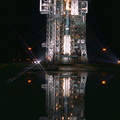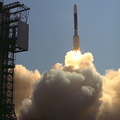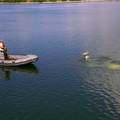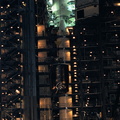
WIKIARCHIVES.SPACE
The Human Spaceflight Archive

Information
- Taken in
- Kennedy Space Center
- Aŭtoro
- NASA
- Priskribo
- A Boeing Delta II expendable launch vehicle lifts off with NASA's Advanced Composition Explorer (ACE) observatory at 10:39 a.m. EDT, on Aug. 25, 1997, from Launch Complex 17A, Cape Canaveral Air Station. This is the second Delta launch under the Boeing name and the first from Cape Canaveral. Launch was scrubbed one day by Air Force range safety personnel because two commercial fishing vessels were within the Delta's launch danger area. The ACE spacecraft will study low-energy particles of solar origin and high-energy galactic particles on its one-million-mile journey. The collecting power of instruments aboard ACE is 10 to 1,000 times greater than anything previously flown to collect similar data by NASA. Study of these energetic particles may contribute to our understanding of the formation and evolution of the solar system. ACE has a two-year minimum mission lifetime and a goal of five years of service. ACE was built for NASA by the Johns Hopkins Applied Physics Laboratory and is managed by the Explorer Project Office at NASA's Goddard Space Flight Center. The lead scientific institution is the California Institute of Technology (Caltech) in Pasadena, Calif.
- Kreita je la
- Lundo 25 Aŭgusto 1997
- Source link
- https://science.ksc.nasa.gov/gallery/photos/1997/
- Vizitoj
- 50
- Poento
- neniu taksado
- Taksu tiun foton
- License
- CC BY-NC-ND
- Modified by WikiArchives
- No (original)
- Elŝutadoj
- 0
Potencigita per Piwigo

























